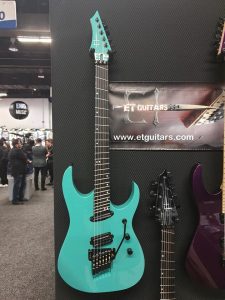By Et Guitars
 Ernie Taylor from Et guitars Australia
Ernie Taylor from Et guitars Australia
wrote this
Here is our MIG FM6, testing new headless saddles hardware from our friends at http://www.apollomusicparts.com/ ,
an Australian company that designs and commissions the manufacture of headless and monorail bridge hardware.
We will be pleased to work with Apollo parts in the future as hardware options on our guitars.
We will do a more detailed video review in the future, but here are the main features and benefits we have found during prototyping.
- machined from solid brass, so good sustain and sturdiness.
- good saddle travel range for intonation.
- metal ball bearing gasket at the thumb wheel, that allows smooth tuning and less contact wear.
- ability to clamp the string in the saddle, to make the string double locked (head and bridge) and stable tuning.
- machined brass saddle with a knife edge and good clearance, to provide a clear saddle contact point with no chance of string buzz.
- they look cool and well finished !
Thanks to our friend Remco at Apollo Music Parts for the hardware and we look forward to using Australian parts in the near future.
